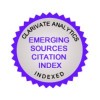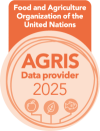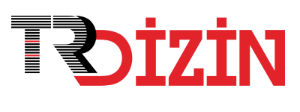Research Article
Short Communication
Aim & Scope
Ege Journal of Fisheries and Aquatic Sciences (EgeJFAS) is open access, international, double-blind peer-reviewed journal publishing original research articles, short communications, technical notes, reports, and reviews in all aspects of fisheries and aquatic sciences.
The journal focuses on interdisciplinary studies that present new and useful information to the international scientific community/readership, and contribute to scientific progress. Before submitting your article, make sure it is suitable for the journal scope.
The main functional areas accepted into the journal are listed as follows:
• Marine and freshwater fisheries,
• Aquaculture,
• Vertebrate and invertebrate aquaculture (marine/freshwater),
• Planktonology and plankton culture,
• Living resources,
• Management and economics,
• Aquaponic,
• Seafood processing technology,
• Feeding and feed technologies,
• Fishing technology,
• Fisheries management,
• Population dynamics,
• Disease and treatment,
• Aquatic microbiology,
• Biology, physiology,
• Macroalgae,
• Biotechnology,
• Conservation and sustainability,
• Environments and ecology,
• Biogeography,
• Biodiversity,
• Climate effects,
• Pollution studies.
Peer Review ProcessPapers are assigned to Section Editors by the Editor-in-Chief after pre-review process by Technical Editor. Reviewers are chosen by the Section Editors. Every attempt is made to obtain two reviews of each manuscript.
The Editor will ask advice from members of the Editorial Board when a dispute between reviewers and authors needs to be resolved.
The reviewer can provide comments for the authors, and separate comments to the Editor in the spaces provided.
Publication Frequency
The journal includes original scientific articles on a variety of different subjects both in Turkish and English and is published four times a year in March, June, September and December.
Page Charges
The journal does not charge any submission and publication fees. All authors/readers have free access to all papers.
Plagiarism Detection
In accordance with its publishing policies EgeJFAS requires plagiarism check for each study that has undergone the "Review Process". The iThenticate plagiarism checker software is used for plagiarism detection.
Author Guidelines
GENERAL INFORMATION
Ege Journal of Fisheries and Aquatic Sciences (EgeJFAS) is open access, international, double-blind peer-reviewed journal publishing original research articles, short communications, technical notes, reports, and reviews in all aspects of fisheries and aquatic sciences.
The journal does not charge any submission and publication fees. All authors/readers have free access to all papers.
All articles receive DOI, are citable, published in PDF format.
• Marine and freshwater fisheries,
• Aquaculture,
• Vertebrate and invertebrate aquaculture (marine/freshwater),
• Planktonology and plankton culture,
• Living resources,
• Management and economics,
• Aquaponic,
• Seafood processing technology,
• Feeding and feed technologies,
• Fishing technology,
• Fisheries management,
• Population dynamics,
• Disease and treatment,
• Aquatic microbiology,
• Biology, physiology,
• Macroalgae,
• Biotechnology,
• Conservation and sustainability,
• Environments and ecology,
• Biogeography,
• Biodiversity,
• Climate effects,
• Pollution studies.
Ege Journal of Fisheries and Aquatic Sciences (EgeJFAS) (Su Ürünleri Dergisi) has been published quarterly (March, June, September, December) by Ege University Faculty of Fisheries since 1984.
The journal is published only as an e-journal since the 1st issue of 2020.Although articles in English and Turkish are accepted, priority is given to articles prepared in English in order to increase international readability and citation. Limited Turkish articles are published in each issue.
Manuscripts should not be copied elsewhere or submitted to another journal for parallel evaluation. Only original manuscripts are considered. It is evaluated with the understanding that the content is approved by all co-authors. Submitted manuscripts are first checked in terms of journal scope, language, presentation, and style. Manuscripts that are not suitable for these aspects will be returned without review.
In order to evaluate the appropriate articles, at least 2 or 3 external and independent referees who are experts in their fields are appointed by a member of the editorial board/section editor. Each manuscript is reviewed through a double-blind peer-review process (identities of neither authors nor peer reviewers are disclosed). Manuscripts returned to authors with referee reports should be revised and sent back to the editor as soon as possible.
Original research papers: These are the article type that the Journal gives the most importance and priority. Should contain data obtained from original studies such as experimental results, field data, and/or theoretical studies.
Short communication: It should include original results and headings, like research papers. Articles provide important new research results/methods or discoveries that do not possible to publish as a full research paper. These articles that are narrowly focused deserve to be published faster than other articles.
Review: Reviews may summarize current research areas of broad importance or provide the readers with an insightful introduction to new and groundbreaking areas of research. It should be examined and discussed in-depth and comprehensively written by the author(s) who have expertise in the subject area, not just the literature surveys. Only invited reviews are considered for publication. If you would like to submit an invited review, please contact the editor-in-chief (editor@egejfas.org) and upload a review cover letter containing the requested information.
Reports:
-Case reports encourage the submission of reports containing feature novel findings or new management strategies. Well-written and illustrated reports are taken into account.
-Brief reports are short, observational studies that report the initial results or completion of a study or protocol.
MANUSCRIPT SUBMISSION
The manuscript, when submitted together with the Cover Letter (Submission declaration and verification) and Copyright Release Form signed by the corresponding author on behalf of all authors, warrants (confirms) that it is original and has not been published elsewhere, has been approved - tacitly or expressly - by all co-authors and the responsible authorities at the institute where the work was carried out. The publisher will not be held legally responsible in case of any claim for compensation.
Before you start submitting an article, please ensure that the article complies with the journal guidelines (instructions) and that you are ready to upload all requested documents (Article File, Similarity Report, Cover Letter, Copyright Release Form, Ethics Committee Approval (if necessary). Please note that submissions that do not contain the required documents/statements will be returned incomplete.
Authorship Contributions, Conflict of Interest Statement, Ethics Approval, Data Availability should be written in the article after Acknowledgements and Funding section.
While starting
For submission of your manuscript prepared in accordance with the guideline to EGEJFAS please click here and after logging into your account (if you don’t have an account please register at https://dergipark.org.tr/en/ . Your default login ID is your email address. Use your existing account; do not create new accounts with new submissions) use the “Submit Article” button on the home page of the journal to start submission. Before submitting a manuscript, do not forget to check the Submission Checklist.
After log in, the article submission process is completed in 5 steps. Upload your article information, article file, and other necessary documents step by step correctly. There is no transition to the next step until a step is completed.
To follow the status of the article;When log into the system (Dergipark) with user information, the related journal appears when the dashboard is clicked. By clicking on the journal, the status of the article can be followed.
After you submit your article via the online system, you will be able to follow the status of your article and you will be automatically notified by e-mail when there is any action.
Similarity Report
To verify the authenticity of the submitted article, a similarity report should be obtained by using the services of plagiarism detection software (Crossref Similarity Check, iThenticate: Plagiarism Detection Software). This report should be uploaded as a separate file named "similarity report".
Cover Letter
When submitting a manuscript, Cover Letter should be uploaded under the subheading "Cover Letter". Cover letter should be prepared separately from the manuscript file.
Ethics in Publishing
Please see our information on Ethical Principles and Publication Policy. Before submission, do not forget to read the "Ethical Responsibilities of the Authors".
PREPARATION OF MANUSCRIPTS
Papers must be clearly written in Turkish or English. Manuscripts should be typed double spaced on A4 size paper in 12-point Times New Roman font including the references, table headings and figure captions with standard margins (25 mm) all around. The author's name should appear centred under the title. Numbered (1) note should give the author's institutional address and an asterisked (*) note should indicate the corresponding author’s e-mail address. Degrees and qualifications should not be included. Degrees and qualifications should not be included.
Line and page numbers should be given from the first page of the manuscript.
Please prepare your typescript text using a word-processing package (save in .doc or .docx).
The complete manuscript should be in a single file containing full text, references, figures and tables. Figures and Tables should be inside the manuscript placed properly (not at the end of manuscript). The line number should be given to the whole manuscript.
• Research papers must not exceed 25 manuscript pages including tables and figures (except systematic checklists).
• Reviews have a maximum of 40 pages and should have the following format: 1) Abstract, 2) Introduction, 3) Subsections relevant to the subject, 4) Discussion.
• Short communications, technical notes, and reports which are results of brief but significant work, must not exceed 10 manuscript pages including tables and figures.
First Page
The title should be short concise and informative, and be a statement of the main result/conclusion presented in the manuscript. The title should not contain abbreviations. Do not forget to add English title for Turkish article. The title should be written in sentence order.
Author Names and Affiliation
The first name and surname of each author should be clearly listed together and separated by commas. Provide exact and correct author names (forenames-surnames) as these will be indexed in official archives. Occasionally, the distinction between surnames and forenames can be ambiguous, and this is to ensure that the authors’ full surnames and forenames are tagged correctly, for accurate indexing online.
Present the authors' affiliation addresses should be indicated at the author's name with superscript numbers immediately after the author's name. The full postal address of each affiliation at the time of research should be listed in order: Department, institution, city with postcode, and country name.
Please clearly indicate who will handle correspondence at all stages of refereeing and publication, also post-publication. Provide an active e-mail address of the corresponding author. It is editorial policy to list only one author for correspondence.
ORCID numbers of all authors should be listed on the article title page as of June 2017. Authors who do not have an ORCID number are required to register their number at www.orcid.org. The ORCID number is mandatory. Articles that do not have an ORCID number or are incorrect will not be evaluated.
Please refer to the journal’s “Ethical Responsibilities of Authors” policy in the Ethical Principles and Publication Policy section for details on eligibility for author listing.
Abstract
English and Turkish abstracts (contributors who are not native Turkish speakers may submit their manuscripts with an English abstract only) of a maximum of 300 words should be included in all submissions. The abstract should be comprehensible to readers before they have read the full paper, and reference citations must be avoided. In the abstract, the importance of the work should be clearly stated; what, why, how it was done should be answered and the contribution of the results to the scientific world should be expressed. It should not contain undefined abbreviations.
Keywords
Below the abstract, please provide 4-6 keywords related to the study that will help to increase the discoverability of your manuscript. It is especially important to include words that are fundamental to your manuscript but are not included in the manuscript title or abstract to increase discoverability by indexing services.
Following pages
Following pages should contain the rest of the paper and should be organized into an Introduction, Material and Methods, Results, Discussion, Conclusion(s), Acknowledgements and Funding, Authorship Contributions, Conflict of Interest Statement, Ethics Approval, Data Availability, References. These should be capitalized. Please note that submissions without required documents/statements will not be accepted.
Introduction
Provide clearly and an adequate background, avoiding a detailed literature survey or a summary of the results. State the specific objective or hypothesis of the study.
Material and Methods
Provide adequate detail to allow the work/experiment to be reproduced. Methods already published should be mentioned by references. Significant modifications of published methods and new methods should be described in detail.
If the study requires “Ethics Committee Permission Certificate”, be sure to report after the "Acknowledgements" section that permission has been obtained from the relevant institution. A copy of the "Ethics Committee Permission Documents" should be uploaded to the system. A detailed explanation on this subject has been made in the "Ethics Approval" heading above.
Results should be clear and concise. Results for different parameters should be described under subheadings or in separate paragraph. Present your results in a logical sequence in the text, tables, and figures.
The discussion should not repeat the results, but should provide a detailed interpretation of the data. The discussion should highlight the importance of the work and the resulting new insights. Only in exceptional cases may the results and discussion be combined with the editor's consent. Avoid extensive citations and discussion of published literature.
ConclusionsThis should briefly state the major findings of the study.
Acknowledgements and Funding
Acknowledgements including people, grants, funds, projects, etc. should be kept brief and placed after conclusion section. Names of contributing people should be written clearly and fully.
Examples:
“The authors are grateful to John Nare, for his friendly collaboration and hospitality during the lipid analysis.”
“The authors would like to thank Ken More for language revision.”
Please clearly and fully specify the relevant funding information (name) with the grant number or codes.
Financial support acknowledgwment should be written like the example given:
"This study was supported by the Turkish Scientific and Technological Research Institution (Grant number: ........).”
“This work was supported by Ege University Scientific Research Projects Coordination Unit. Project Number: ….”
“Author Mary Lee has received research support from Company A.”
If the research has no specific financial support, please include the following statement:
"This research has not received a specific grant, fund or other support from any funding agency in the public, commercial, or not-for-profit sectors."
Authorship Contributions
Identifying individual author contributions (CRediT - Contributor Roles Taxonomy, ICMJE-Defining the Role of Authors and Contributors, Transparency in authors’ contributions) is important to reduce authorship disputes and facilitate collaboration. The publisher recommends that authors include statements of contribution stating each author's contribution to the work to promote transparency. This gives authors the opportunity to share an accurate and detailed description of their various contributions to the work. The corresponding author is responsible for ensuring that the disclosures are correct and accepted by all authors.
The roles of all authors should be listed. Authors may have contributed to more than one role. These contributions should be placed in the text with the heading of “Authorship Contributions”, after the "Acknowledgements" section of the article. See below examples:
Example: All authors contributed to the idea and design of the study. Material preparation and investigation were performed by [full name], [full name] and [full name]. The writing/editing was carried out by [full name] and all authors have read and approved the article.
Example: CRediT author statement (Click for more information about CRediT)
Full name/s: Conceptualization, Methodology, SoftwareFull name: Data curation, Writing- Original draft preparation
Full name/s: Visualization, Investigation
Full name/s: Supervision
Full name/s: Software, Validation
Full name/s: Project administration, Resources, Funding acquisition
Full name/s: Writing- Reviewing and Editing
For review article; it should be stated whose idea, who did the literature survey and data analysis, who wrote the draft, and who revised the criticisms.
For articles produced from student's dissertations or thesis, it is generally recommended that the student is listed as the principal author (A Graduate Student’s Guide-APA Science Student Council 2006).
Changes to Authorship
At the time of submission, the author (s) information, the corresponding author and the order of the authors must be correct. Changing the author order, adding/deleting are not allowed during the revision phases. However, in rare cases, it can be applied when detailed and acceptable reasons are presented. All authors must agree with any addition, removal or rearrangement and the reasons for changes should be explained in detail. After the article is accepted, no changes can be made to the authorships.
Conflict of Interest Statement
Authors should declare if they have any financial or personal relationships with any institution/organization or person that may adversely affect their work. Conflict of interest statement should be attached to the article after the Acknowledgements section.
If the authors have financial or personal relationships with any institution/organization or person that may adversely affect their work, they should declare within a separate file by selecting the 'conflict of interest' subheading as the file type when submitting the manuscript. Conflict of interest statement should also be attached to the article after the Acknowledgements section of the article.
In the event of a potential conflict of interest, the authors must state: "The following financial interests / personal relationships may be potential competitive interests."
Conflict of interest statement should be provided even if the authors have no competition or conflict of interest.
If there is no conflict of interest; "The authors declare that there is no known financial or personal conflict that may affect the research (article)" or “The authors declare that there are no conflicts of interest or competing interests”.
Ethics Approval
All animal and human experiments conducted in the manuscript research should comply with the ARRIVE guidelines, EU Directive 2010/63/EU, The Code of Ethics of the World Medical Association (Declaration of Helsinki), and National Ethics Committee for Animal Experiments (HADMEK, HADYEK). If there is a human study in the article, it must comply with The Code of Ethics of the World Medical Association (Declaration of Helsinki).
If the submitted article involves the use of animal (vertebrate) and human subjects, authors should prove that they have carried out the manuscript studies in accordance with the relevant laws and regulations and they have received the approval of the authorized institutional committee (s) (including the ethics committee name and reference number, if possible). If a study was granted exemption or did not require ethics approval, this should also be detailed in the manuscript.
Copies of approval should be uploaded to the system under the subheading "Ethics Committee Approval". In addition, an explanation should be added to the article with the title of "Ethics Approval" after the Acknowledgements section.
Examples:“Approval was granted by the Ethics Committee of University B (Date.../No....).”
“This is an observational study. The ABC Research Ethics Committee has confirmed that no ethical approval is required.”
“This article does not contain any human or animal studies performed by any authors.”
“The authors declare that all applicable guidelines for sampling, care, and experimental use of animals in this study have been followed.”
“Sampling and handling procedures of the fish were in accordance with an …… protocol approved by University of ……..”.
“No specific ethical approval was necessary for this study.”
Retrospective Ethics Approval
If necessary, an application should be made to the ethics committee and approval should be obtained before starting a study. Generally, retrospective ethical approval cannot be obtained. It may not be possible to consider such articles for peer review. In such cases, it is at the Editor's discretion to decide whether to proceed with the peer review.
Data Availability
Articles are open access and free to use. Published articles are archived permanently. Proper citation is required when using an article published in a journal.
In order for the datasets reflecting the results of the article should be accessible to the readers; the journal encourages that datasets may be stored in public repositories (where available and appropriate) and addressed in the article, provided in the article, or in supplementary files whenever possible, or available from the corresponding author upon request. Regarding data availability, authors can follow one of the ways described. Enquiries about data availability should be directed to the authors. This information should be placed in the text with the heading “Data Availability” after the “Acknowledgements” section of the article. See examples below:
Examples:Data availability: All of the data summarized in the study are available in the (name) Data Repository, (link address).
Data availability: The data sets generated during and/or analysed during the current study will be provided by the corresponding author upon the request of the editor or reviewers.
Data availability: For questions regarding datasets, the corresponding author should be contacted.
Data availability: All relevant data is in the article.
Scientific Style
In writing of systematic /biological papers, international terminology such as “International Codes of Zoological Nomenclature (ICZN), and International Code of Nomenclature for Algae Fungi and Plants (ICNAFP)(Formerly known as the International Code of Botanical Nomenclature - CBN) International Code of Botanical Nomenclature (ICBN)” must be strictly followed. The first mention in the text of any taxon must be followed by its authority including the year. The names of genera and species should be given in italics. Clearly write the full genus name at the first occurrence in the text, and abbreviate it when it occurs again. When referring to a species, do not use the genus name alone; Be careful when using 'sp' (singular) or 'spp.' (plural).
Equations and units
Please ensure that equations are editable. Leave a space on both sides of the <, ±, =, etc. equations used in the text. For units and symbols, the SI system should be used.
Abbreviations
Please define non-standard abbreviations at first use in the text with full form followed by the acronym in parentheses. Use only the acronym for subsequent explanations.
Footnotes
Footnotes should be numbered consecutively. Those in tables or figures should be indicated by superscript lower-case letters. Asterisks should be used for significance values and other statistical data. Footnotes should never include the bibliographic details of a reference.
References
Full references should be provided in accordance with the APA style. The usage of reference managers as Mendeley© or Endnote© or an online reference manager as Citefast with the output style of APA 7th edition is advised in organizing the reference list.
Please ensure that every reference cited in the text is also present in the reference list (and vice versa) and avoid excessive referencing.
In-Text CitationIn-text citation to the references should be formatted as surname(s) of the author(s) and the year of publication (also known as the author-date system).
If a specific part of a source (book, article, etc) is cited directly, a page number should also be included after the date. If the full source is used, the citation page number is not displayed.
For example: Kocataş, 1978, p. 3
Citation can be shown in two ways: Parenthetical Citation or Narrative Citation.
References to be made at the end of the sentence should be shown in parentheses. If the cited reference is the subject of a sentence, only the date should be given in parentheses. There should be no parentheses for the citations that the year of the citation is given in the beginning of the sentence.
Citation examples according to the number of authors are given below.One author:
Consider the following examples:
-……………(Kocataş, 1978)
- Kocataş (1978) states…….
- In 1978, Kocataş’s study of freshwater ecology showed that….
Two authors:
If there are two authors, the surnames of both authors should be indicated and separated from each other by "and", (Geldiay and Ergen, 1972).
Consider the following examples:
-……….(Geldiay and Ergen, 1972)
- Geldiay and Ergen (1972) states……
- Similar results were expressed by Geldiay and Ergen (1972), Kocataş (1978).
More than two authors:
For citations with more than two authors, only the first author’s surname should be given, followed by “et al.” –in Turkish article ‘vd.’- and the date (Geldiay et al.,1971; Geldiay vd., 1971). See below examples:
-Geldiay et al. (1971) state…….
-…………………………( Geldiay et al., 1971).
-There are few studies on this subject (Geldiay et al.,1971).
Two or more works by different author:When its needed to cite two or more works together, in-text citations should be arranged alphabetically in the same order in which they appear in the reference list and used semicolons to sparate citations.
For example: Several studies have reported similar results (Geldiay and Ergen, 1972; Kocataş 1978; Thurry 1987).
Two or more works by the same author:If there are two or more works by the same author, list the years of publication in order, earliest first. For example: (Kocataş, 1978, 1979, 1981) or Kocataş (1978, 1979, 1981).
Citation to authors with more than one work in the same year:
The works should be cited as a, b, c, etc. after the date. These letters must be listed alphabetically according to the surname of the first author in the bibliography list.
For Example:
-Geldiay and Ergen, 1972a
-Geldiay and Ergen, 1972a, b
No authors:If the author is unknown, the first few words of the source should be used and dated.
For example: (A guide to citation, 2017).
In some cases, "Anonymous" is used for the author, accept this as the name of the author (Anonymous, 2001). Use the name Anonymous as the author in the reference list.
No publication date:If the publication date is unknown, write “n.d.” (no date) in the in-text citation.
Example: (Geldiay, n.d.).
Citation to secondary sources:
In scientific studies, citation should be made to the original primary sources. Cite secondary sources when the original work is out of print, not available, or only available in a language you do not understand. If you want to cite a work that you can't find yourself, through a citation from another source, using the phrase “…………as cited in”.
For Example: (Geldiay and Ergen 1972, as cited in Kocataş, 1978)
Personal communication and unpublished results:Personal communications, such as phone calls, emails, and interviews, are not included in the reference list because readers can’t access them. The in-text citation is also formatted slightly differently as follow:
Example:
- Demands have been increasing lately. (A. Kale, personal communication, May 10, 2021).
General use of websites and software:It should be showed as below.
-The website of Egejfas (www.egejfas.org) includes author guidelines.
-Statistical software SPSS (version 25) was used to analyze the data.
In References
All citations should be listed in the reference list, with the exception of personal communications and unpublished results.
All references must be written in English. If an article is written in a language other than English, give the title in English and indicate the language in which the article is in parentheses at the end of the source. Example: (in Turkish)
If the article has only an English abstract, indicate it in parentheses (English abstract) or (only English abstract)
References should be listed alphabetically ordered by the author’s surname, or first author’s surname if there is more than one author.
Hanging indent paragraph style should be used.
The year of the reference should be in parentheses after the author name(s).
The correct arrangement of the reference list elements should be in order as “Author surname, first letter of the name(s). (publication date). Title of work. Publication data. DOI
Article title should be in sentence case and the journal title should be in title case. Journal titles in the Reference List must be italicized and spelled out fully; do not abbreviate titles (For example; Ege Journal of Fisheries and Aquatic Sciences, not Ege J Fish Aqua Sci). Article titles are not italicized. If the journal is paginated by issue the issue number should be in parentheses.
DOI (Digital Object Identifier) information (if available) should be placed at the end of the reference as in the example. After added DOI information, "dot" should not be put. The DOI information for the reference list can be retrieved from CrossRef © Simple Text Query Form (https://doi.crossref.org/simpleTextQuery) by just pasting the reference list into the query box. After copying and pasting all the references of your article in the query box on this page, the DOI information is listed as added to the relevant reference. It is strongly recommended to provide DOI information of the references.
For a reference with up to 20 authors, ALL authors (up to 20) are spelled in the reference list. When the number of authors is more than 21, "......" is used between the 19th author and the last author (APA 7th edition).
For example:Bolotov, I.N., Kondakov, A.V., Konopleva, E.S., Vikhrev, I. V., Aksenova, O. A, Aksenov, A. S., Bespalaya, Y. V., Borovskoy, A. V., Danilov, P. P., Dvoryankin, G. A. Gofarov, M. Y., Kabakov, M. B., Klishko, O. K., Kolosova, Y. S., Lyubas, A. A., Novoselov, A. P., Palatov, D. M., Savvinov, G. N., Solomonov, N. M., ……..& Vinarski, M. M., (2020). Integrative taxonomy, biogeography and conservation of freshwater mussels (Unionidae) in Russia. Scientific Reports, 10, 3072. DOI:10.1038/s41598-020-59867-7 In the reference list sta
rting with the same surname and names (initials), works with a single author are put in chronological order first; Then, two-author works are taken into account in alphabetical order of the second author. Multi-author works are listed only chronologically.
For example:Kocataş, A. (1978)
Kocataş, A., & Ergen, Z. (1972).
Kocataş, A., & Geldiay, R. (1972)
Kocataş, A., Ergen, Z., & Geldiay, R. (1980)
The citation of journals, books, multi-author books and articles published online etc. should conform to the following examples:Journal Articles
Öztürk, B. (2010). Scaphopod species (Mollusca) of the Turkish Levantine and Aegean seas. Turkish Journal of Zoology, 35(2), 199-211. DOI:10.3906/zoo-0904-23
Özbek, M., & Ulutürk, E. (2017). First record of Spongilla lacustris (Porifera: Demospongiae) from the Eastern Black Sea (Uzungöl Lake, Trabzon) (in Turkish with English abstract). Ege Journal of Fisheries and Aquatic Sciences, 34(3), 341-346. DOI: 10.12714/egejfas.2017.34.3.14
BooksParsons, T.R., Matia, Y., & Lalli, C.M. (1984). A manual of chemical and biological methods for seawater analysis. New York, Pergamon Press.
Kleiner, F.S., Mamiya, C.J., & Tansey, R.G. (2001). Gardner’s art through the ages (11th ed.). Fort Worth, USA: Harcourt College Publishers.
Chapter in booksGollasch, S. (2007). Is ballast water a major dispersal mechanism for marine organisms? In W. Nentwig (Ed.), Biological Invasions (pp. 29-57). Berlin: Springer.
E-books and chapter in e-booksMitchell, J.A., Thomson, M., & Coyne, R.P. (2017). A guide to citation. Retrieved from https://www.mendeley.com/reference-management/reference-manager
Troy, B.N. (2015). APA citation rules. In S.T, Williams (Ed.). A guide to citation rules (2nd ed., pp. 50-95). Retrieved from https://www.mendeley.com/reference-management/reference-managerProceedings
Soultos, N., Lossifidou, E., Lazou, T., & Sergedilis, D. (2010). Prevalence and antibiotic susceptibility of Listeria monocytogenes isolated from RTE seafoods in Thessaloniki (Northern Greece). In Ş. Çaklı, U. Çelik, C. Altınelataman (Eds.), West European Fish Technologists Association Annual Meeting 2010 (pp. 94-98). İzmir, Turkey: Proceedings Book.
WebsitesMitchell, J.A. (2017, May 21). How and when to reference. https://www.howandwhentoreference.com
If the resource was written by a group or organization, use the name of the group/organization as the author. Additionally, if the author and site name are the same, omit the site name from the citation.
American Society for the Prevention of Cruelty to Animals. (2019, November 21). Justice served: Case closed for over 40 dogfighting victims. https://www.aspca.org/news/justice-served-case-closed-over-40-dogfighting-victims
ThesisAcarli, S. (2005). Larval production of oyster. Doctoral dissertation, Ege University, Turkey.
Tables and Figures
All illustrations (drawing, photograph, image, graphics, etc.), except tables, should be labeled ‘Figure’. Tables and figures should be numbered using consecutive Arabic numbers, and referred to as "Table 1, Figure 1" in the text, unless there is only one table or one figure.
Each table and figure should contain a short title. If the paper is prepared in Turkish, table and figure titles should be written in 2 languages, both English and Turkish. Table and figure captions should be placed in appropriate places.
Tables and figures should be included in the article after they are cited in the relevant text.
TablesTables should be prepared by table tool in Word, tables in image form will not be accepted.
• Table title should be placed above the table.
• If there are table notes and abbreviations, please place them below the table body.
• Prepare the tables vertically. Avoid large tables.
• Give a short heading for each column.
• Make sure that the data presented in the table does not repeat the results described elsewhere in paper.
• Please avoid using vertical lines, colour or shading in table cells.
• Tables need not to exceed 175 x 227 mm.
• The dimensions of the tables do not exceed 175 x 227 mm.
FiguresFigures, which are recommended for electronic formats such as JPEG, TIFF and minimum 300 dpi should be also arranged in available dimensions. Do not submit files that are too low in resolution and disproportionately large for the content.
Photos can be in color or grayscale. Photographs and all illustrations(figures,maps, etc.) should be in clear format. Graphics should be pasted in editable format and not converted to image format. When it is necessary, the original copies of the figures will be asked from author(s) as separate files, after the reviewing process being concluded. Arial Narrow font should be used in the figüre (graphics, etc). A brief title containing the description of the figure should be given under the figure but explain all symbols and abbreviations used.
Permissions
If authors include figures, tables or text passages published elsewhere, or use of software, questionnaires and scales that require permission in the study, they should obtain permission from the copyright holders. Please note that some publishers do not provide electronic rights for free and Ege University/EgeJFAS (Su Ürünleri Dergisi) will not be able to reimburse or be responsible for any costs incurred in obtaining these permissions. In such cases, materials from other sources should not be used.
Copyright Notice
Authors who publish with this journal agree to the following terms:
- Authors retain copyright and grant the journal right of first publication with the work simultaneously licensed under a Creative Commons Attribution License that allows others to share the work with an acknowledgement of the work's authorship and initial publication in this journal.
- Authors are able to enter into separate, additional contractual arrangements for the non-exclusive distribution of the journal's published version of the work (e.g., post it to an institutional repository or publish it in a book), with an acknowledgement of its initial publication in this journal.
- Authors are permitted and encouraged to post their work online (e.g., in institutional repositories or on their website) prior to and during the submission process, as it can lead to productive exchanges, as well as earlier and greater citation of published work (See The Effect of Open Access).
Ethical Principles and Publication Policy
Price Policy
Articles are open access and free to use. Published articles are archived permanently. Proper citation is required when using an article published in the journal.
Indexes
Journal Boards
Director
Editor-in-Chief
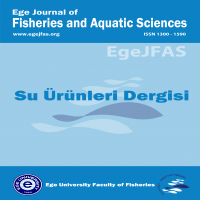
Co-Editor-in-Chief

Technical Editor
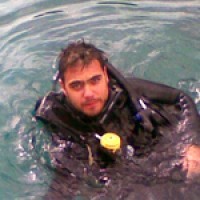
Statistical Editor

İngilizce
Foreign Language Editor





Editorial Office


Editorial Board



